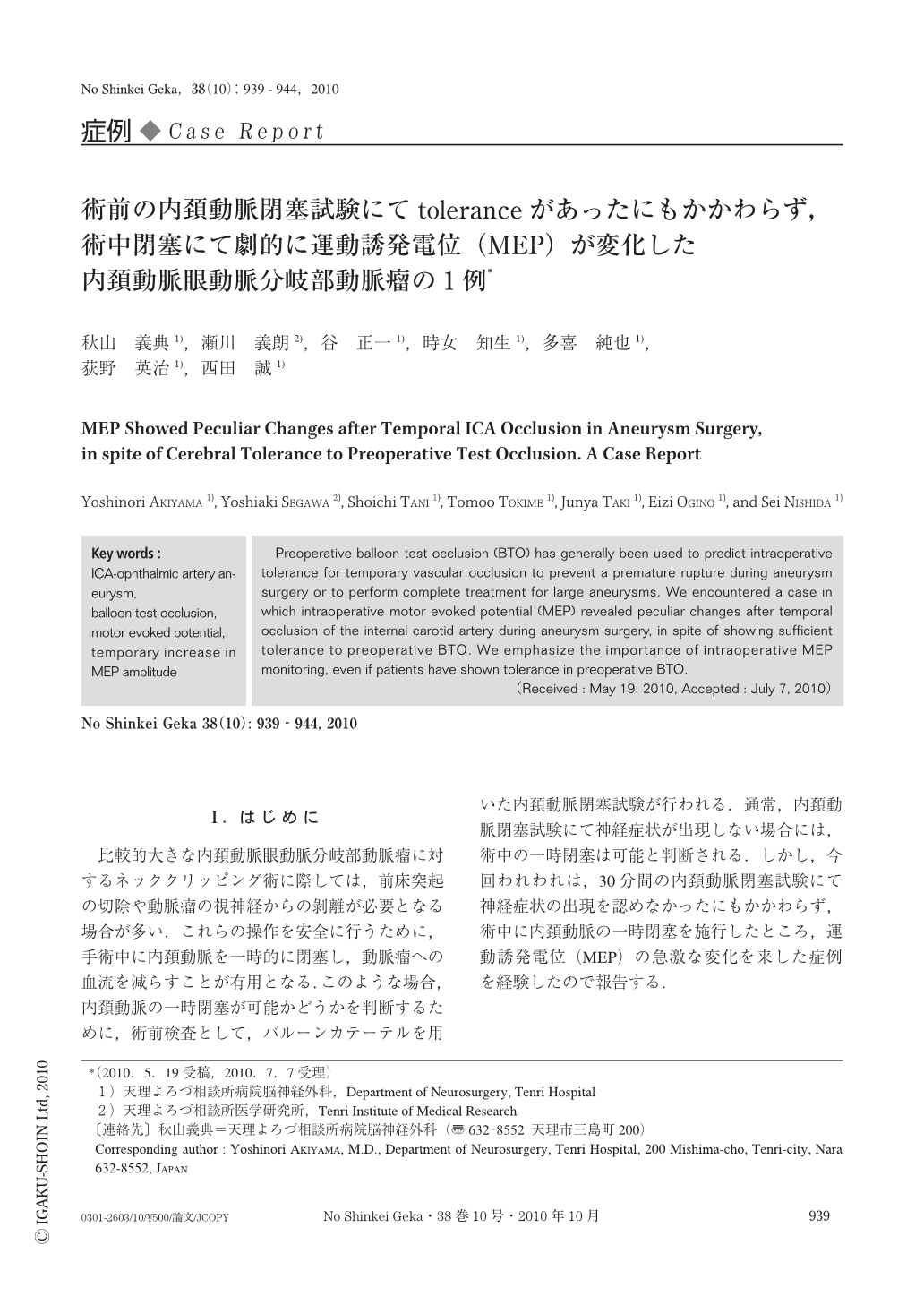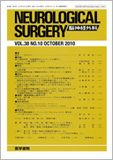Japanese
English
- 有料閲覧
- Abstract 文献概要
- 1ページ目 Look Inside
- 参考文献 Reference
Ⅰ.はじめに
比較的大きな内頚動脈眼動脈分岐部動脈瘤に対するネッククリッピング術に際しては,前床突起の切除や動脈瘤の視神経からの剝離が必要となる場合が多い.これらの操作を安全に行うために,手術中に内頚動脈を一時的に閉塞し,動脈瘤への血流を減らすことが有用となる.このような場合,内頚動脈の一時閉塞が可能かどうかを判断するために,術前検査として,バルーンカテーテルを用いた内頚動脈閉塞試験が行われる.通常,内頚動脈閉塞試験にて神経症状が出現しない場合には,術中の一時閉塞は可能と判断される.しかし,今回われわれは,30分間の内頚動脈閉塞試験にて神経症状の出現を認めなかったにもかかわらず,術中に内頚動脈の一時閉塞を施行したところ,運動誘発電位(MEP)の急激な変化を来した症例を経験したので報告する.
Preoperative balloon test occlusion (BTO) has generally been used to predict intraoperative tolerance for temporary vascular occlusion to prevent a premature rupture during aneurysm surgery or to perform complete treatment for large aneurysms. We encountered a case in which intraoperative motor evoked potential (MEP) revealed peculiar changes after temporal occlusion of the internal carotid artery during aneurysm surgery, in spite of showing sufficient tolerance to preoperative BTO. We emphasize the importance of intraoperative MEP monitoring, even if patients have shown tolerance in preoperative BTO.

Copyright © 2010, Igaku-Shoin Ltd. All rights reserved.


